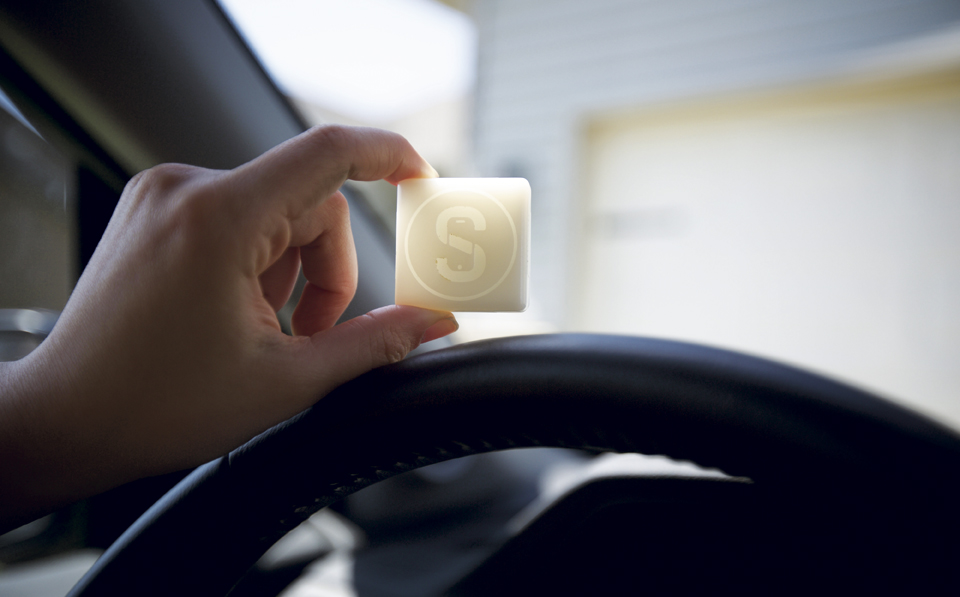Innovative developments bring loss control inspections, distracted driving prevention to the independent agency arena
Innovation labs. Business accelerators. Incubators. These facilities bring together resources—generally space, mentorships, marketing tools, and maybe money—to help startups and other entrepreneurial operations get off the ground. For years the terms were used in other industries, but not ours. That’s changed, as businesses and individuals look to find new or better ways to operate in the insurance arena.
Much of the work revolves around leveraging technology to drive new or improved insurance-related processes. As a result, the term “InsurTech” has become associated with it. For some, the term has negative connotations—and possible threats. “Agents and carriers, when they think of InsurTech, may envision someone who is disrupting or upsetting the distribution channel—someone who is out to get them,” says Jim Gardner, an entrepreneur in the space. “But at its simplest, InsurTech is just insurance technology.”
In and of itself, it’s a neutral term. “For me, it’s a matter of ‘How can we use technology to make the processes and experience associated with our current insurance distribution system better?’” Gardner comments. “And others out there are after the same thing—how to make processes better.”
Gardner, a seasoned loss control professional, recently took part in InsurTech Week 2016, a five-day insurance immersion program hosted by Global Insurance Accelerator (GIA) in Des Moines, Iowa. GIA is a mentor-driven business accelerator that was created to foster innovation by supporting startups focused on innovating in the insurance industry. Its investors are insurance companies and most of its mentors are industry execs.
The event brought together a dozen up-and-coming insurance technology companies and members of GIA’s insurance community for idea exchanges, educational sessions, one-on-one meetings, and social interaction. Gardner was there in his role as CEO and co-founder of ViewSpection, a young company that’s looking to change how loss control is done, in conjunction with and in support of independent agents.
App-driven inspections
“I’m a second-generation loss control guy,” Gardner explains. “My entire professional life I’ve been self-employed in the family business, The Gardner Group.” The firm was founded in New York and provides loss control services in eight states.
“ViewSpection came about as an offshoot of an off-site meeting with our Gardner Group staff,” he recalls. “We were brainstorming how to complete solid fuel burner, or woodstove, surveys, because of how difficult it is to set up physical inspections. We came up with ways of doing it with phones and pictures and off-the-shelf apps.” Problem solved.
“We see (ViewSpection) as a new and different channel for the agent to connect with the policyholder who wants to do self-service.”
—Jim Gardner
CEO
ViewSpection
“Then somebody in the room said, ‘Why can’t we do this with everything?’ From there, it didn’t take long for the conversation to morph and for us to start developing what would become a self-service or do-it-yourself loss control app,” Gardner notes. “We’d bring the process down to the policyholder and the agent.”
That shift in a sense would disrupt his existing business. “We wouldn’t start the process with a loss control inspection, which is what my other company does—the field-based, boots-on-the-ground inspector,” he comments. “The policyholder is in a good position to perform an inspection and do it well, as is the agent.”
So the team developed ViewSpection, a platform and app that walk a policyholder through a residential or commercial property with a list of questions. “We boil every question down to an image, and we also ask specific questions,” Gardner explains. “The app instantly builds the professional report that an agent or underwriter would typically get from an inspector.”
The app is designed to be easy to use. “It has to be,” he acknowledges. “Then it comes down to engagement—engaging the policyholder or the agent to do something. The technology is there. We use images and scans and video. It really is easy.”
According to Gardner, ViewSpection goes beyond creating a loss control inspection. “We see it as a new and different channel for the agent to connect with the policyholder who wants to do self-service,” he remarks. “More and more customers want digital moments and want to handle things themselves. This fits very nicely.”
The platform and app were launched first with carriers that Gardner’s team already had been working with. “They asked us if they could invite their agents to take part,” he recalls. “Following successful pilots last year, we’re reaching out to more agents who want to bring the functionality to their prospects and customers.”
Gardner points to several benefits ViewSpection delivers to independent agents. “First, of course, is the inherent value of getting good-quality reports, and being able to get them done easily,” he notes.
The app provides another touchpoint for agents. “Agents who operate in a more consultative way can use the app as a reason to go out and visit the property,” he says. “That allows greater familiarity with the risk, and it also provides the agent another way to build a deeper connection with the prospect or policyholder.”
Agents who don’t want to or can’t do a site visit simply invite the policyholder or prospect to download the app and walk through the inspection process on their own. “We’ve found that about 60% of those whom agents invite opt in within about 12 hours,” Gardner notes. “They say, ‘Sure, I’d love to do that.’ And they engage. It’s a great way, for example, to get interior information about a property that an agent or inspector wouldn’t get on a drive-by.”
But do policyholders do a good job with the inspection? “A big question we get asked is, ‘Will a policyholder really take a picture of a defect?’ Our experience says they do,” he says. “They’re very transparent once they opt in. It would be pretty easy to see if they didn’t; any experienced agent or underwriter would be able to tell that right away.”
Finally, Gardner says, ViewSpection offers a way to remove the friction sometimes associated with loss control inspections. “Nobody wins when, after an agent did a great job on a sale, a random inspector walks on site and upsets the applecart,” heobserves. “We can take the friction point out and prevent the agent from having to salvage the sale and rebuild a relationship.”
The app works for personal and commercial lines exposures. Reports are delivered electronically as PDFs. “In 2017 we expect to explore ways to make delivery easier and perhaps integrate reports with existing agency or carrier systems,” Gardner says.
Distractions gone
Another startup that participated in a GIA program last year is Smart Drivinc. The company was part of GIA’s “cohort”—a 100-day Des Moines-based program that started in February and culminated in a demo day at the Global Insurance Symposium, where participants presented to more than 500 insurance industry professionals. Smart Drivinc is focused on eliminating distractions by removing the temptation to use a phone while driving.
Company owner Shashaanka Ashili, previously a research scientist with a bio-optical physics background, founded the firm in early 2015. “When we first started developing our product, we were focused on the consumer market,” he recalls. “After engaging with mentors and other industry professionals at the Global Insurance Accelerator, we shifted from B2C to B2B. Now we’re targeting insurance carriers, agents and brokers.”
Part of what drove the change was a desire to respond more fully to some alarming trends, including a marked increase in traffic fatalities and steady growth in the number of auto accidents in recent years. “Fatalities were up by more than 7% in 2015 and were expected to increase by more than 10% in 2016,” Ashili says.
“By offering SXI, agents can demonstrate their concern for what troubles their prospects—namely their safety and the safety of their families.”
—Shashaanka Ashili
CEO Smart Drivinc
“Smartphone adoption also has increased over the past several years—from less than 30% in 2010 to more than 80% now,” Ashili notes. “There is an empirical relationship between the accident/fatalities and smartphone data—it’s been shown that more than one in four accidents are due to drivers using smartphones. So we decided to have our product serve as a loss control resource on the business side—which is carriers and agents and brokers—as well as a safety device on the family or policyholder side.”
The company’s product, called SXI, is made up of two parts—a piece of hardware about the size of a quarter and software that’s downloaded to the driver’s smartphone. “It’s not a telematics or usage-based insurance device,” Ashili explains. “We’re not looking to collect or monitor driver behavior.” The goal is to simply reduce distractions.
“The hardware sits on the windshield and creates a smart zone surrounding the driver,” he says. “The software is an app that’s installed on the phone that can figure out where the phone is when the car is being driven. If the phone is in the driver’s seat—or zone—it will go into a preconfigured mode where only a limited number of white-listed phone numbers and apps are accessible.”
The goal is not to shut the phone down altogether. “In this hyper-connected world, we don’t want to do that,” Ashili remarks. “Instead we want to reduce the distractions the driver receives from the smartphone. Our solution essentially downgrades the smartphone to a dumb phone, similar to those we used 10 years ago to talk on—and not text.”
The product launched in October 2016. “We are working with carriers, brokers, and agents in various stages of pilot and public release,” Ashili notes. “Initial pilots targeted personal lines passengers, and that’s where most of our focus is right now.” As the company expands into commercial, it envisions targeting smaller automobile fleets first because they’re not served by telematics technology that is well established in the trucking arena.
“In commercial lines, liability for accidents tends to be much higher,” Ashili explains. “A large segment of the commercial auto market—small fleets, in particular—can benefit from reducing distractions.” The company has a pilot under way with a firm that operates a small fleet, so it’s able to serve that segment now if there’s interest.
Smart Drivinc is looking to make SXI available through local insurance agencies. “Our goal in the next year is to reach out to more carriers and agents and brokers and get this product into their portfolio,” Ashili says. “Agents are very engaged locally, and we believe that offering this tool is just another way they can show their concern for the exposures faced by people in the communities where they live and work.”
It’s an exposure people are concerned about. Ashili points out that, according to the Travelers Risk Index, more than 90% of consumers—and 76% of parents—are worried about technology distraction. “By offering SXI, agents can demonstrate their concern for what troubles their prospects—namely their safety and the safety of their families,” he adds.
“Acquisition and retention are big challenges for agents,” Ashili says. “By offering something new—something other than a $20 or $50 price reduction—agents can attract new customers who want to enhance driver safety.” Customers will stay with the agency if they want to continue using the device and software.
Of course, there’s the inherent benefit of improving driver safety and reducing the number of accidents. And along with enhanced policyholder safety come fewer claims and better carrier loss ratios. “This improved performance can go right to the agency’s bottom line in the form of incentives,” Ashili notes. “So it’s a win, win, win proposition for everyone.”
By Dave Willis, CPIA
For more information:
Smart Drivinc
www.smartdrivinc.com
ViewSpection
www.viewspection.com






